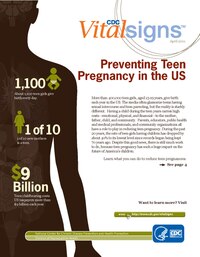
Photo from wikipedia
Objectives The objective of this study was to examine the prevalence of adolescent motherhood among married adolescent girls and its associations with their partners’ characteristics in low-income and middle-income countries… Click to show full abstract
Objectives The objective of this study was to examine the prevalence of adolescent motherhood among married adolescent girls and its associations with their partners’ characteristics in low-income and middle-income countries (LMICs). Design Population-based study. Participants 54 285 ever married (or lived with a partner) adolescent girls (15–19 years old) were including in prevalence analysis. However, partner characteristics were assessed in a subsample of 24 433 adolescent girls who were married (or living with a partner) at the time of interview. Settings Data from the latest available Demographic and Health Survey round during 2010–2018 in 48 LMICs across different geographic regions. Results The overall prevalence of adolescent motherhood was 73.98% (95% CI 70.96 to 78.10) among married adolescent girls in this study. In the pooled analysis, statistically significant and positive associations were observed between adolescent motherhood and partners’ desire for more children (adjusted marginal effect (AME): 2.34, 95% CI 1.21 to 3.47) and spousal age gap (AME: 1.67, 95% CI 0.30 to 3.04 for three plus age gap). However, no statistically significant association was observed between adolescent motherhood and partners’ education (AME: −0.36, 95% CI −1.77 to 1.05 for primary education) and partners’ agricultural occupation (AME: 1.07, 95% CI −0.17 to 2.32). Overall, there was significant variation in the associations across countries; however, the positive associations persisted between adolescent motherhood and partners’ desire for more children and spousal age gap in most of the studied countries. Conclusions Our findings may inform policymakers about the importance of incorporating partners of married adolescent girls into the existing birth control programmes to delay age at first birth among married adolescents in LMICs. More attention should be given to the married adolescent girls who have older partners, and efforts to discourage marriages with much older partners may have a secondary benefit of reducing adolescent motherhood in LMICs.
Journal Title: BMJ Open
Year Published: 2022
Link to full text (if available)
Share on Social Media: Sign Up to like & get
recommendations!